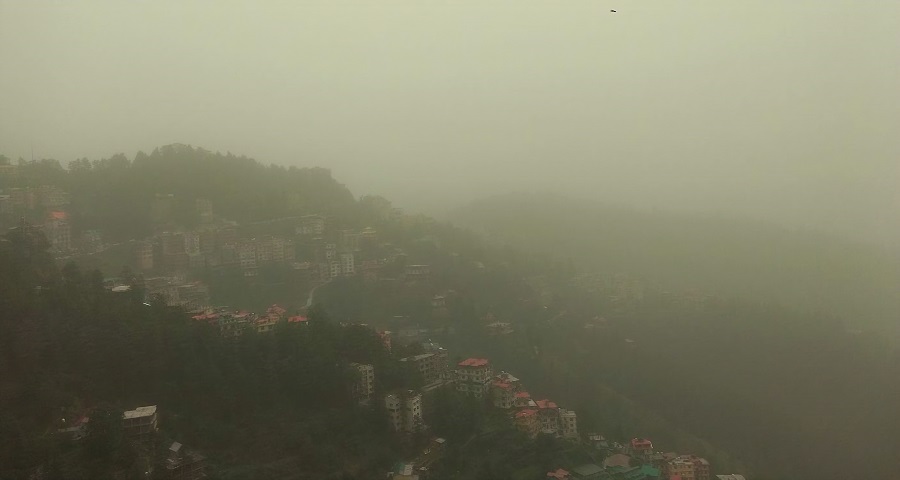On a beautiful land called Dev Bhoomi (Himachal Pradesh) has famous for their beauty of hills and noble weather and climate for a living. A number of tourists visited over the Solan and Shimla district and spent their vacation every year. Over the past few years, the human activities such as the construction of buildings and roads have a massive effect to the ecosystem which results; deforestation, global warming, drought condition, ecosystem imbalance and huge impact over plants and animals species who depend upon each other as far their food or survival.
On June 15, 2018, a strong dust storm was observed in the Solan and Shimla district of Himachal Pradesh which impact over the air quality and reduced the visibility due to suspended dust particles to above 300µg/m³ from 80-85µg/m³ on normal days present in the air. These dust storms were also affected the Uttar Pradesh, Delhi, Rajasthan, Mohali, Chandigarh and last Shimla via Solan region. According to the BBC news report, at least 109 people have been killed and scores more injured in fierce dust storms that hit the northern Indian states of Uttar Pradesh and Rajasthan in month of May and June due to falling trees, low visibility causing road accident, falling house due to strong wind and unhealthy people especially asthma and other respiratory disorder patients. According to the meteorological department Shimla, the haze was worsened by the higher humidity levels. The road transportation and helicopter taxi (Pawan Hans) were also affected due to unsuitable weather condition and low visibility. These suspended particles responsible for the many health-based problems in human as well as in animals such as from respiratory to allergic reactions including wheezing, cough, chest discomfort and shortness of breath exclusively in the context of an asthma patient and it could prove to be fatal. According to the report of the Indira Gandhi Medical Hospital Shimla, the number of the asthma patients has been increased from 15 to 17 June 2018. This deadly dust storm has a mixture of dust particles, gases, and other toxic chemical pollutants already floating in the breathable air which has particulate matter (PM) 10 and PM 2.5 that favorable for atmosphere degradation.
Recommendations
The human activities are surprisingly increasing with nature that has capacity to tolerate up to certain limit which is already crossed. The natural disaster dust storm has a great potential to affect the life of the plants,and their ecosystem. A number of safety measurements to reduce the impact and avoid exposure to such deadly dust storm are given below.
- Trying to stay in the indoor places till the haze is eliminate especially for the children and elderly person who have smaller lung-reserve, can risk of breathing problems.
- During such conditions, wearing a simple mask (N95) is advisable to minimize the damage.
- The meteorological departments have a responsibility to regularly monitoring and aware the people with the use of media and other technologies.
- Wash the product before its use due to dust settlement over the clothes to edibles items.
- It’s a responsibility for every single individual on the earth to active participation in the social activities such as plantation, protest against pollution, burning straw, deforestation, toxic metal ions in gases and other environmental degradation events.
Solving a problem of this magnitude will not be an easy task. Public education, innovation, and environment specialist along with a strong commitment from local, national and international governments, are urgently needed. For instance, there is need to take a serious action regarding the clean environment and their climate by the Himachal Pradesh government, department of wildlife and forest conservation, state control pollution board and other Non-governmental organizations are collaborating themselves and will establish new strategies with strict implementation and regularly monitoring, so to make a contribution in every possible way to keep the environment unharmed and healthy for living purpose.
